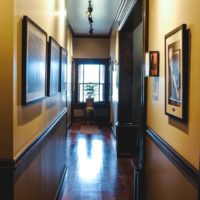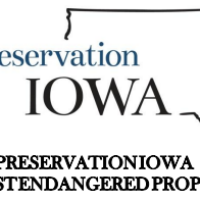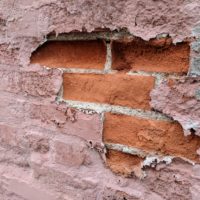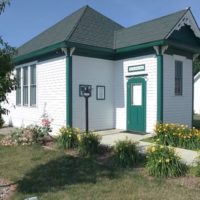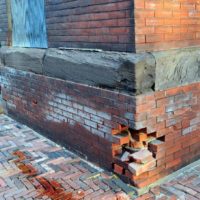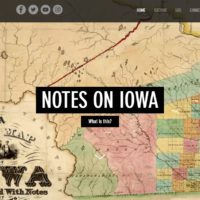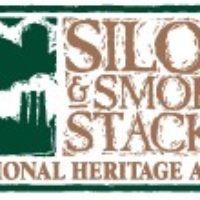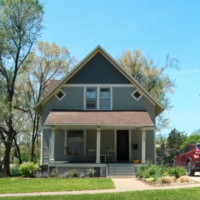Preservation at its Best 2017, Community Effort: Frankie House (Cedar Rapids)
A Bohemian immigrant home destined for the landfill became a labor of love for Save Cedar Rapids Heritage, a young non-profit organization that works to preserve historic buildings through awareness and action.
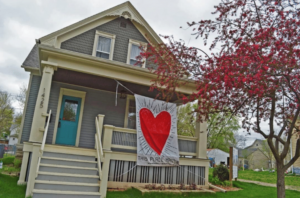
Frankie House, Preservation at Its Best (Cedar Rapids)
Built in 1894 by John Kuba, a Bohemian immigrant and railroad employee, the house had been used most recently as a rental by the neighboring church, whose members decided they no longer had the funds for its upkeep and took out a demolition permit to clear the site for “green space.” Citing its itact character-defining features, including historic closed gable cottage form with a secondary gable and ell, offset primary entrance, wood lap siding, decorative gable ends and Victorian era trim work, the Cedar Rapids HPC placed a 60 day hold on the demolition, in hopes that someone could save the home.
Save CR Heritage tried to find a potential buyer and when unable to, board members voted to take on the project to move and rehabilitate the home, a first for our group, which was founded in 2012 in response to the demolition of two historic churches in Cedar Rapids. Kuba’s first tenants, Dr. Frank and Josephine Woitishek, lived there from 1895 to 1898. Frank Woitishek was recognized for his research into the high number of suicides among the local Bohemian population in the late 19th and early 20th centuries.
In March 1898, the couple’s three-year-old daughter Frankie died, and Save CR Heritage named the home “Frankie House” in memory of the little girl. Our goal was to keep the home in the historic Wellington Heights neighborhood, but we could not find a suitable vacant lot. Another organization, the Affordable Housing Network Inc., (AHNI) offered to donate a lot that was too small for the 1,462 square foot house, so Save CR Heritage approached the Wellington Heights Neighborhood Association with plans for a swap. In exchange for the neighborhood’s community garden planted on a vacant lot where a home once stood, Save CR Heritage donated the AHNI lot as a new home for the garden. With a suitable lot found, the church agreed to sell the house to Save CR Heritage for $10 and the project was announced at a press conference in May 2015. That September, the home was moved approximately four blocks to its new location.
Save CR Heritage took out a bank loan to finance the cost of the move, along with building a new foundation, faced with masonry work reflecting the time period in which the house was built, and other needed repairs.
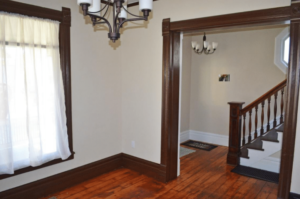
Frankie House Foyer and Living Room
Board members spent hundreds of hours volunteering on weekends to scrape the exterior paint – under lead-safe paint practices – and prime and paint the house, as well as begin interior work. The board recruited other volunteers, including AmeriCorps NCC members, to help with the rehab, and reached out to contractors who donated a new roof, heating and cooling system, and other needed amenities.
The group applied for state historic tax credits and continued to seek donations. Still, the organization faced a funding shortfall until one of the board members stepped forward to offer a no-interest loan.
Work was able to continue with the help of the bridge loan and a general contractor. Electricians and other professionals were hired to upgrade the home’s infrastructure, while retaining historical elements, including wood floors, most plaster walls and ceilings and mill work on both levels.
The sole significant loss was the balustrade of the main staircase, removed prior to the building’s transfer to Save CR Heritage. Iowa City’s Friends of Historic Preservation donated a salvaged balustrade, from a house built in the same era that was being demolished, to replace it.
The home participated in the City of Cedar Rapids ROOTs program which was created to replace housing lost in the Flood of 2008. The program also provides downpayment assistance to promote affordable home ownership to combat a local issue of absentee landlords with dilapidated housing.
After more than a year of work, with a core group of about a dozen Save CR Heritage board members and over 50 outside volunteers, the home was finally finished in April 2017, marked by a press conference and open house. The success of this project resides not only in the rehabilitation of a historic home, but the coordination between four local non-profits, and support from the City and community. This project gave us the opportunity to go beyond advocacy to active stewardship and serves as an example of appropriate urban infill development within the context of an established historic neighborhood.
Preservation Iowa’s two most visible programs are Iowa’s Most Endangered and Preservation at Its Best. These two programs work well together because being listed as Most Endangered often times leads to awareness, a preservation effort, and a high-quality, award winning project.
The full list of Preservation Iowa’s 2017 Preservation at its Best award winners include:

